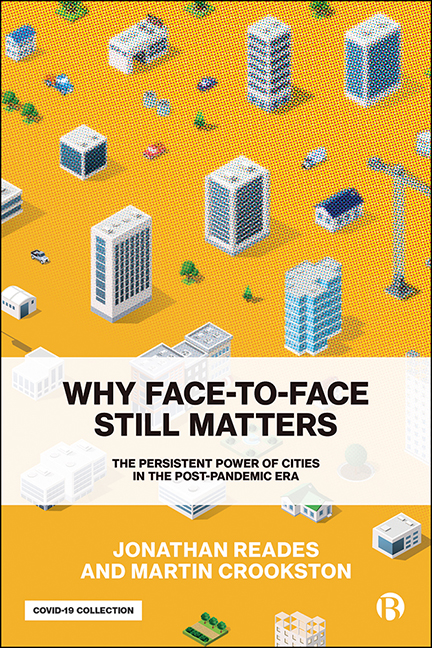8 - And in the End …
Published online by Cambridge University Press: 04 January 2022
Summary
My Wife and family return’d to me now out of the Country, where they had been since August by reason of the Contagion, now almost universally ceasing: Blessed be God for his infinite mercy in preserving us.
John Evelyn, The Diary of John Evelyn, entry for 6 February 1666In the end, it's still about the human touch: making time and making contact, even when it might well seem like it's gone for good. In this context, ICT is the great enabler – we can ‘reach out’ across cities and continents as never before – but it is not the great substitute – F2F is still integral to maintaining relationships, confidence and commitment. So, ICT substitutes for the trip across town when all we really wanted to do was say ‘Hey, how are things?’, but there is no substitute for when ‘seeing the whites of their eyes’ is essential. Consequently, central places, where contact is easier and quicker, retain a crucial advantage.
And the great agglomerations, where there's lots of potentially useful contact all around, create a critical mass for doing business in many of our most dynamic sectors. Not in every market, or for every sort of deal, of course: for great swathes of business, from travel booking to logistics to advanced engineering, 21st-century digital technology means liberation from ‘you had to be there’ day in and day out. This book has been about how these differences work, and what that means for cities. In our Introduction, we raised a range of questions. We asked: what do people value about cities? Is distance ‘dead’? Why do firms still pay astronomical rents for the CBD office when ICT should allow them to locate in cheaper suburbs? And why isn't telecommuting much more common, as forecast for a long time now?
To answer these questions, we looked at how different ‘layers’ of interaction stack up, one on top of the other: infrastructure, which creates the opportunity ‘surface’ of sites that are more or less connected; markets, which load the infrastructure with potential depending on the ranges across which goods and services are sold; transaction patterns, which configure firms and their connections within markets; and the people, who set this all in motion day after day.
- Type
- Chapter
- Information
- Why Face-to-Face Still MattersThe Persistent Power of Cities in the Post-Pandemic Era, pp. 217 - 224Publisher: Bristol University PressPrint publication year: 2021



